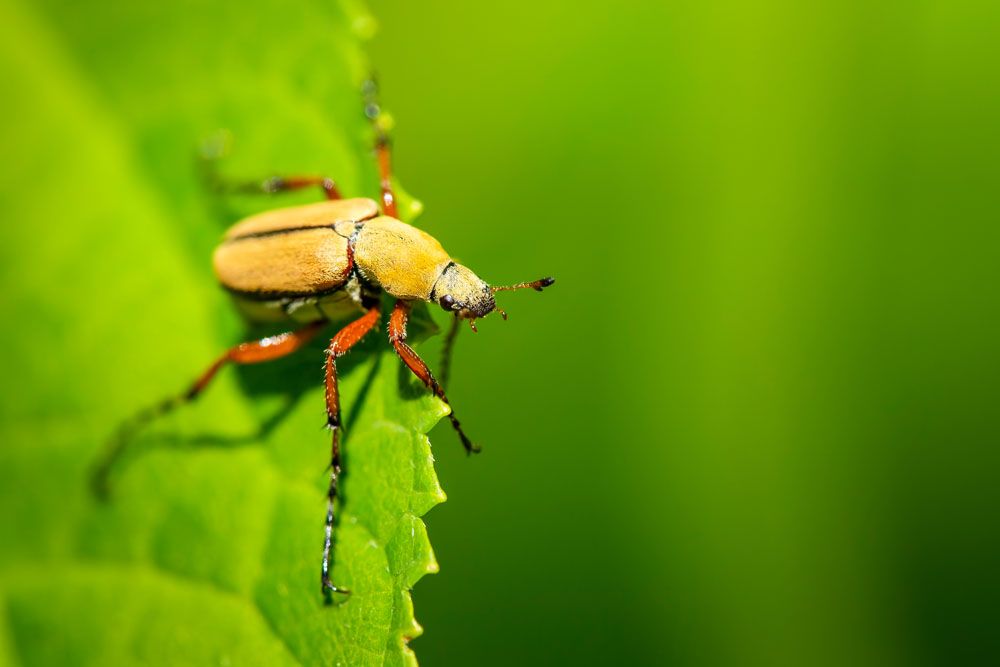
Rose Chafer – Macrodactylus subspinosus
Rose Chafer: Appearance, Territory, Damage and Life Cycle
Latin Name: Macrodactylus Subspinosus
Appearance: These little and thin beetle members are a widespread pest commonly associated with roses, but they can consume other sorts of plants. Larvae of the Rose Chafer are equally competent at killing plant life, especially grass. The white pudgy grubs attack grass blades from the roots, possibly destroying beautiful lawn. Adults enjoy a cuisine with greenery, flowers, and vegetation. The Rose Chafer is distinguished by its ivory-yellow color. It has short, silky hairs on its elytra (wing covers). The legs are a deeper shade of brown than the rest of the body. It has a slimmer body than other Scarab beetles, such as the similarly dangerous Japanese Beetle. May and June beetles are less bothersome cousins.
Hosts Plants: Rose chafers appear to favor rose and peony blooms, fresh grapes, and grape leaves. Rose chafers are notable for the range of hosts on which they feed, as well as the fact that they are harmful to hens and birds when consumed. Rose chafers eat rose petals and other flowers. The grubs eat grass roots, weeds, and nursery stock. Because rose chafers prefer to deposit their eggs in sandy soil, plants in sandy areas are more likely to be attacked.
Territory: Subspinosus may be found from Eastern Canada to Colorado and is a pest of many crops and flowers. It gets its popular name of rose chafer because it consumes rose leaves, but it also eats a variety of other plants.
Damage Insect Cause: Of course, the rose chafer and Japanese beetle eat during the day, but the majority of the others feed at night. The rose chafer flies roughly a month sooner than the Japanese beetle, in late May and early June. They eat roses, peonies, and occasionally iris and other flowers. They also eat on grapes and can cause significant harm to elms, birches, and other trees.
Life History and Habits: In late May and early June, adult beetles can be spotted emerging from the ground.
- They eat plants for three to four weeks, usually until late June.
- Females deposit eggs in the earth and die soon after.
- The eggs hatch into little, white grublike larvae that feed on the roots of grasses and weeds two to three weeks later.
- The larvae spend the winter below the frost level in the soil.
- The next spring, they develop into pupae before emerging as adults.
- Every year, one generation is born.
